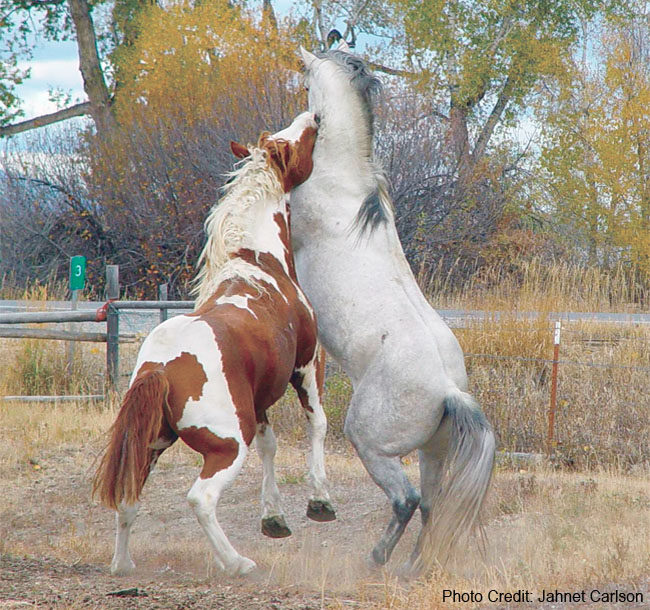American Farriers Journal
American Farriers Journal is the “hands-on” magazine for professional farriers, equine veterinarians and horse care product and service buyers.

KINGS OF THE PADDOCK. Stallions are an impressive sight, but they can present difficulties for farriers. Alabama farrier Milton Reeder says that learning to “read” a stallion’s mood and signals can make the job go much more smoothly.
Farrier Milton Reeder of Warrior, Ala., says that, especially during breeding season, stallions can be dangerously unpredictable.
“There’s a certain amount of risk involved in shoeing, even in the best of situations,” Reeder says. That’s even more true when working on stallions and he emphasizes that special care must be taken in setting up a safe environment and handling system. A stud can nail you fast if you don’t stay on your toes and read the clues that he might be ready to lose his temper or become aggressive. A farrier’s safety often boils down to the use of good old-fashioned horse sense.
In setting up to trim or shoe a stallion, Reeder wants a safe working environment that is also a good place for the horse’s frame of mind.
“Atmosphere dictates attitude,” he explains, “and if a horse is in a good atmosphere and handled and treated properly, the problems are a good 50 percent less.”
He avoids working on a stallion in a box stall, where he could be trapped between the horse and a wall with no quick way out. He makes sure he has plenty of space around him. A wide barn alleyway is ideal, as long as there is no traffic — human…